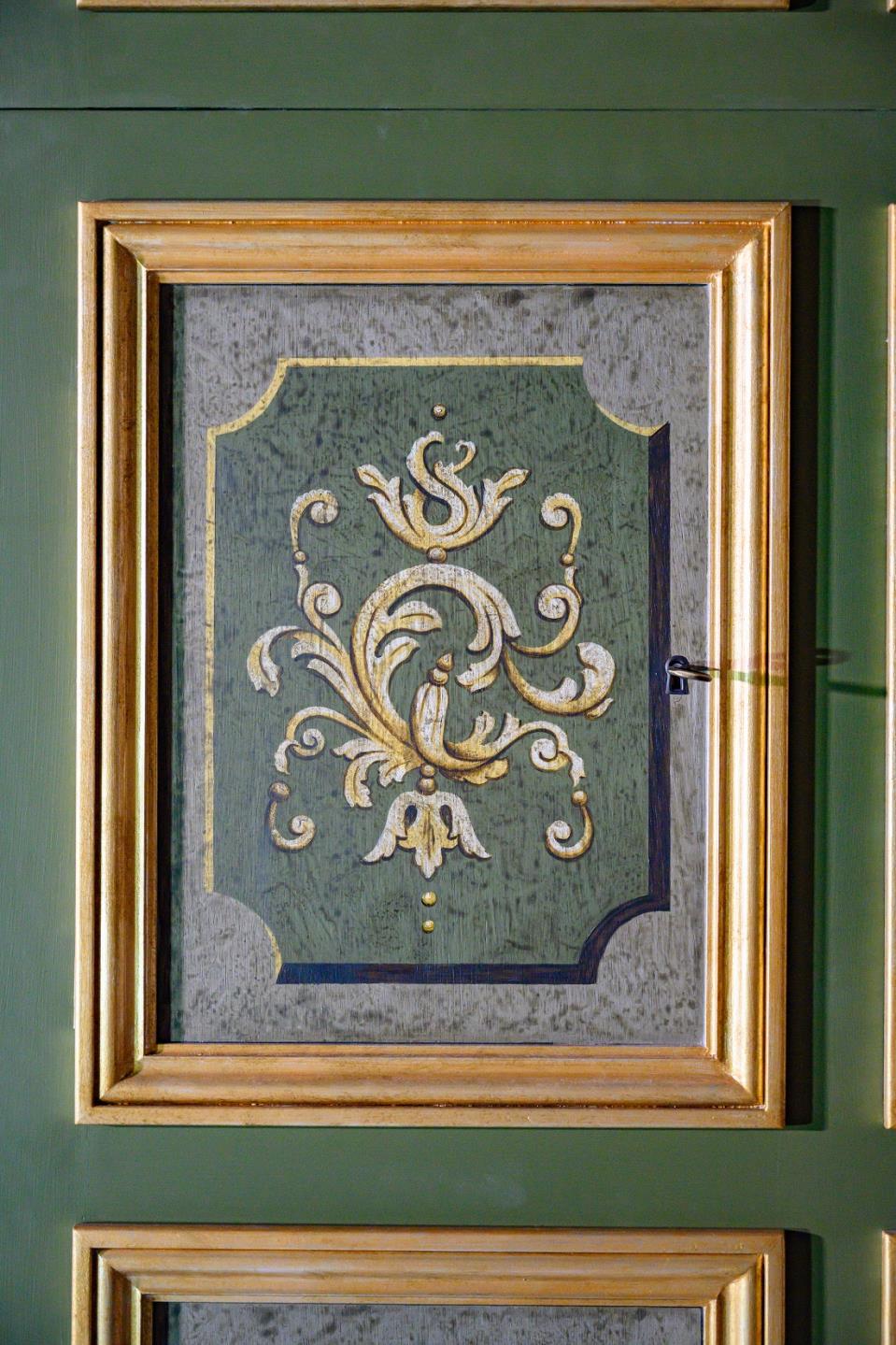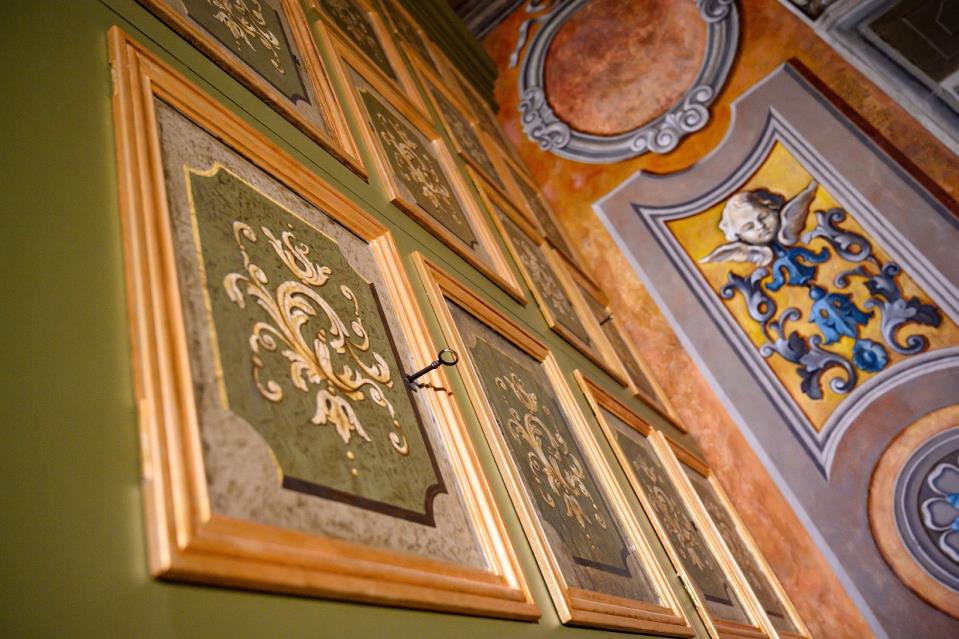The historic Cancelleria (chancellery) within the Inquisitor’s Palace – a 17th and 18th century religious powerhouse – is currently undergoing a complete reconstruction, following detailed plans unearthed from 1700. The plans were originally presented by Inquistor Giacinto Ferrero di Messerano to the Vatican to justify the increase in expense from the original projected budget.
Professor William Zammit came across the plans which survive in the Archivo Segreto Vaticano in Rome while undertaking research on the Inquisition. The find was simultaneously exciting and providential. “Whilst we had information on the built fabric of the palace at our disposal, for the first time we were afforded a glimpse of the actual furnishings through one particular elevation plan of the Cancelleria,” Kenneth Cassar, Senior Curator for Ethnography and the Arts, remarked enthusiastically.
The function of the Chancellery was to house ‘special’ tribunal sittings and the corresponding trial papers as separate from the spiritual tribunal which took place in a seperate room. Beyond his role as a spiritual judge, the Inquisitor was also responsible for civil hearings concerning anyone who was directly employed by the Inquisitor himself, be they domestics or officials, and thus fell under his jurisdiction as opposed to the Castellania (civil law court) of the Order of St. John. Appeals pertaining to the Reverenda Fabrica di San Pietro – set up to finance the building of St. Peter’s in Rome – were also held here. The Inquisitor wore the additional hat of commissoner of this institution, to ensure that money bequeathed in wills and donations, did actually make its way to its intended destination. The spiritual tribunal, where trials instigated by auto confessions or third party denunciations reporting transgressions against the doctrines of the church, took place in a separate location in the Palace.
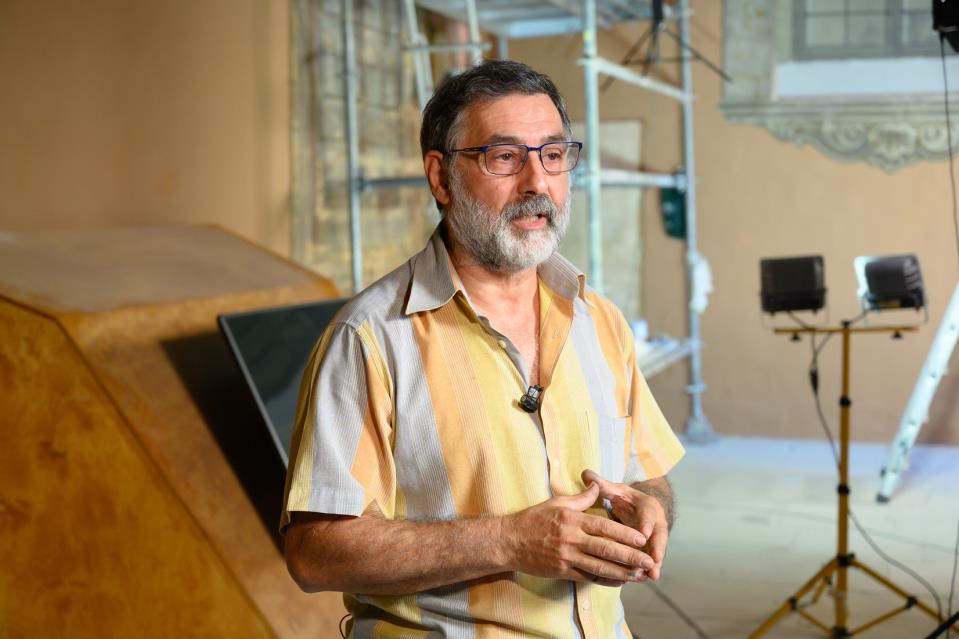
Senior Conservator Anthony Spagnol
Messerano’s elevation plans of the chancellery feature wall to wall, decoratively painted cabinetry intersected by three separate platforms for inquisitorial officials who officiated during these hearings. The exquiste cabinetry which is being reconstructed by Martin Vella, Supervisor and Carpenter with Heritage Malta together with his team, was used to archive documents appertaining to the civil hearings as well as those to the Reverendra Fabrica di San Pietro. The plans include a portrait of Pope Innocent XII, former Inquisitor Antonio Pignatelli, painted by Francesco Gaulli known as ‘Baciccio’, a prolific portrait artist in Baroque Rome. A wall mural including two false windows and a section of the same cabinetry in trompe l’oeil lends a “homogenous arrangement” to the whole, where the cabinetery could not extend, as otherwise it would have obstructed the opening of a door leading to the spiritual Tribunal. “We managed to interpret the empty spaces on the wall as they were in the 18th century,” Cassar affirms. Likewise, symmetry has been restored to the inside wall of the Chancellery entrance where previously - in the absence of the abutting cabinetry - the mural on the wall appeared to be off centre.
As far as the colour and the decorative scheme of the cabinetry goes, the trompe l’oeil fragments, helped piece the jigsaw together, as did another unlikey source. It appears that physical evidence of the upcycled original cabinets were found in door panels in another part of the palace. “The colour of the doors differs slightly from the mural but we can tell for sure it’s a decorative cabinet arrangement from the same period within the same building,” Kenneth Cassar maintains. A couple of inventories of the Chancellery which the Palace has in its possession, completed the picture, making “a full faithful reconstruction,” of the room possible. In recreating the cabinets, the dedicated team of carpenters “had to reverse 300 years in technology to emulate the workmanship of the period.”
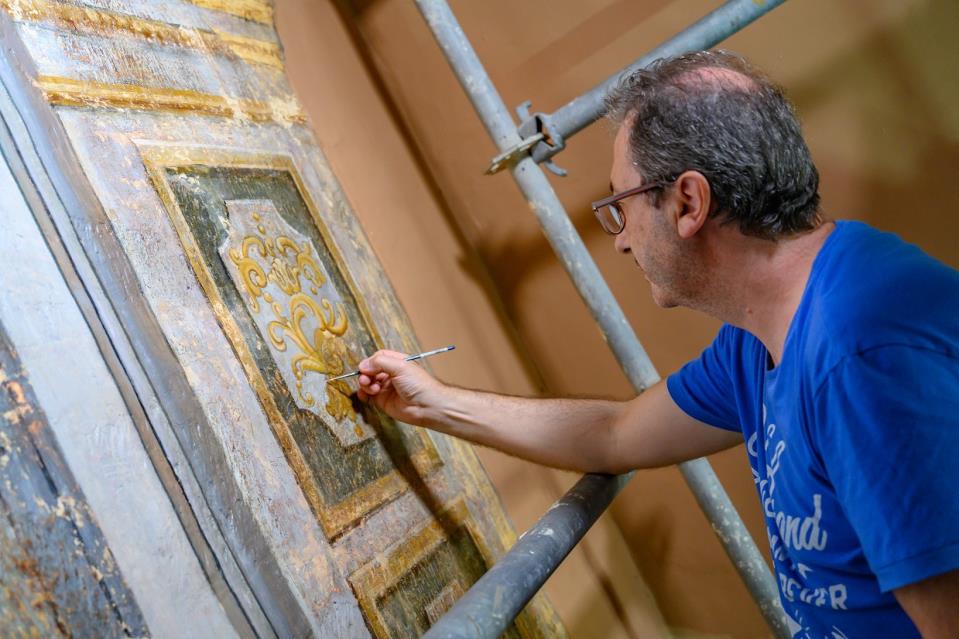
Painter Conservator Brian Caruana
Although the original Cabinetry no longer exists in its entirety, their contents do. When the French abolished the Maltese Inquisition in June 1798, during their brief occupation of the islands, the then Chancellor played for time. The French demanded the documents under his care, but under the pretext of having to organise and categorise them, he stalled as much as he could. Luckily for him, the French invaders were soon booted out. In the meantime, the historic documents were handed over to the Church and are till this very day safely kept in the Cathedral Archives in Mdina.
Along the passage of time, the Chancellery has undergone many incarnations and accompanying redecorations. For instance, during the Second World War, the Chancellery was used as an emergency church by the Dominican Order who had moved their convent into the Inquisitor’s Palace during wartime reconstruction.
The frieze that runs along the upper part of the chancellery will be undergoing a process of conservation, as much of it survives from the 18th Century. However, a decision was taken to address the many fragments of oil on stone murals, including two false windows which had been amateurishly reconstructed in the 1920’s and then later in the 1960’s. This was done due to heavy losses of the original paint layer.
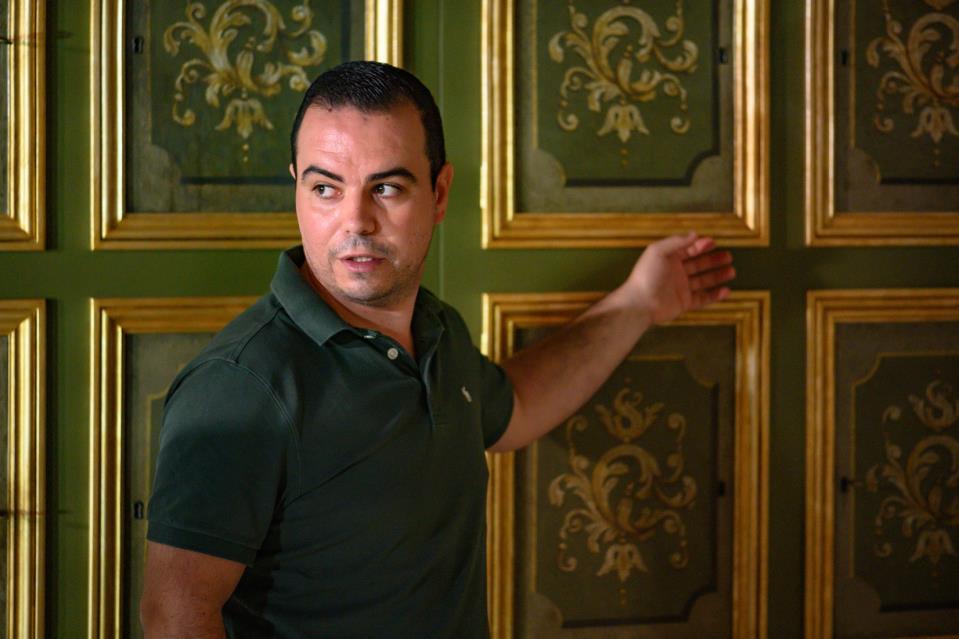
Kenneth Cassar, senior curator
Anthony Spagnol, Senior Conservator within Heritage Malta assisted by Brian Caruana who works within Heritage Malta’s Paintings laboratory are painstakingly removing much of the heavy overpainting that was carried out in the past two interventions.
Following the curatorial decision to reconstruct the Chancellery as it was in the first decades of the 18th century, a proper reconstruction (following the fragmented areas), was then carried out in order to give the wall decorations their proper historical style.
Work on the Chancellery commenced in March 2020, taking advantage of the closure of the Museum due to COVID-19. The reconstruction is part of an ongoing extensive programme of rehabilitation, maintenance, renovation and upgrade of several museum sites within Heritage Malta.
The Chancellery’s revival is entirely a Heritage Malta in-house project, utilising the combined, accumulated expertise of the: curators; the carpenters’ workshop; the paintings conservators; and the scientific laboratories which were responsible for analysing the different layers of paint. “It’s a very interesting project, that falls within the parameters of the interpretive vision of the palace as a 17th and 18th century centre of power, reinstating back how this place must have looked like in the Inquisitor’s time,” Cassar concludes.
